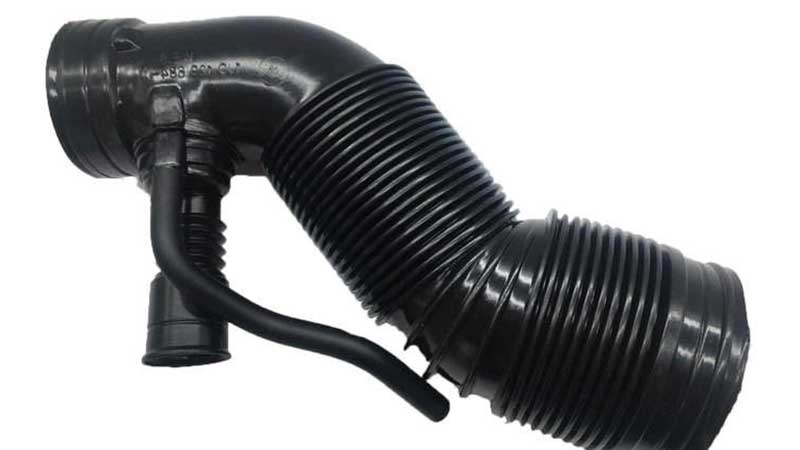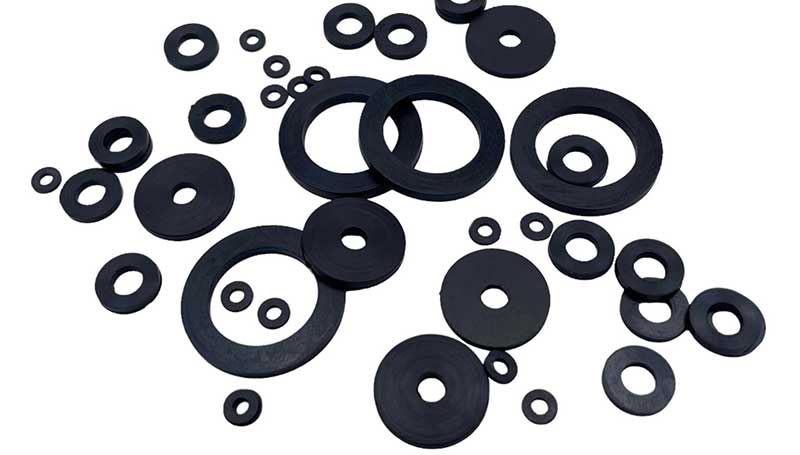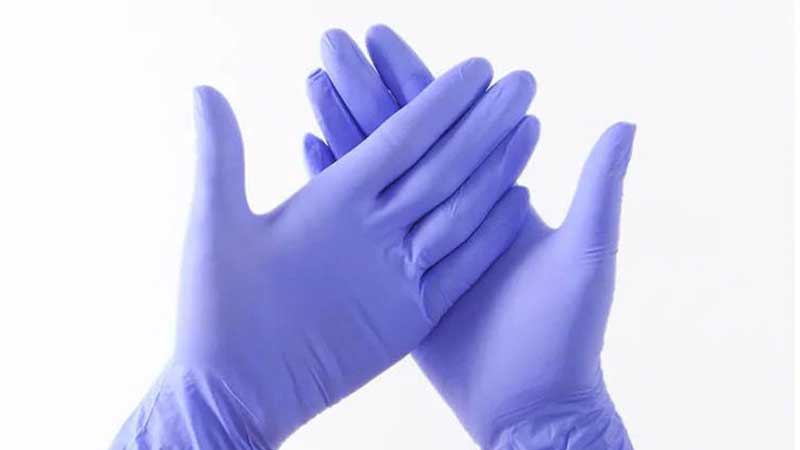האם אתה נאבק לבחור בין סיליקון ו TPE? בחירה בין סיליקון ל- TPE יכולה להיות מסובכת, מכיוון ששניהם חולקים כמה מאפיינים דומים. במאמר זה, אנו נצלול לפרטי שני החומרים, הדגשת ההבדלים ביניהם כדי לעזור לך לבחור בחירה מושכלת.
מהם סיליקון ו- TPE?
הגדרת סיליקון
סיליקון הוא פולימר סינטטי העשוי מסיליקון, חַמצָן, פַּחמָן, ומימן. עמוד השדרה הסיליקון-חמצן מעניק לו גמישות ויציבות. סיליקון רך ואלסטי, שמירה על תכונותיה על מגוון רחב של טמפרטורות. זה מגיע בצורות שונות, כמו אלסטומרים, שרפים, ג'לים, ונוזלים. צורות אלה משמשות במוצרים כמו כלבי ים, אטמים, מכשירים רפואיים, וכלי מטבח.
הגדרת TPE
TPEs הם סוג של חומרים המשלבים תכונות תרמופלסטיות ואלסטומריות, בדרך כלל המורכב מתערובת או קופולימר של פלסטיק וגומי. הקטעים הקשים מעניקים לו קשיחות, בעוד שהקטעים הרכים מספקים גמישות, יצירת איזון של כוח וגמישות. ניתן לעבד אותו לאלסטומרים תרמופלסטיים וזמין ברמות קשיות שונות. TPE משמש במוצרים כמו חלקי רכב, הַנעָלָה, ומכשירים רפואיים.
מהם ההבדלים בתכונותיהם?
| נֶכֶס | סיליקון | TPE |
| רכות וגמישות | מעולה - סיליקון רך וגמיש | מאוזן - TPE מציע שילוב טוב של גמישות וכוח |
| התנגדות לטמפרטורה | מעולה -סיליקון יכול לעמוד בטמפרטורות קיצוניות מ -60 מעלות צלזיוס ל- +300 מעלות צלזיוס | טוב -TPE מתפקד היטב מ -30 מעלות צלזיוס ל- +100 מעלות צלזיוס |
| עמידות כימית | מעולה - סיליקון מתנגד למגוון רחב של כימיקלים, כולל חומצות, בסיסים, שמנים, וממיסים | טוב - TPE מתנגד לשמנים, שומנים, אלכוהול, חומצות חלשות, בסיסים חלשים, וכמה ממיסים |
| התנגדות שחיקה | בינו. | מעולה - TPE מצטיין בהתנגדות לשחיקה, עם התנגדות ללבוש חזקה |
רכות וגמישות
סיליקון
סיליקון ידוע ברכותו ובגמישותו. זה מתעוות ללא נזק קבוע. קשרי ה- Si-O במבנה המולקולרי שלו מעניקים לו גמישות ומאפשרים לו לחזור לצורתו המקורית לאחר מתיחה או דחיסה. סיליקון יכול להישאר גמיש בטמפרטורות נמוכות וגם גבוהות, שמירה על גמישותה. זה הופך אותו למתאים למוצרים כמו כלבי ים, אטמים, ומכשירים רפואיים, כאשר גמישות ונוחות חיוניים. למרות זאת, הרכות שלו גם מגבילה את עמידותה בסביבות חיכוך גבוה, מכיוון שהוא נוטה ללבוש לאורך זמן.
TPE
ל- TPE יש איזון של רכות וגמישות בגלל מבנה הקטעים הקשים והרכים שלו. הקטעים הרכים מאפשרים ל- TPE להתכופף ולמתח מבלי לאבד צורה, והקטעים הקשים מוסיפים חוזק ועמידות בלאי. שילוב זה הופך את TPE לאידיאלי ליישומים הדורשים גם גמישות וגם חוזק. TPE שומר על גמישותו בתנאים שונים, מציע עמידות בסביבות קשות.
התנגדות לטמפרטורה
סיליקון
סיליקון ידוע בהתנגדות הטמפרטורה יוצאת הדופן שלו. עמוד השדרה הסיליקון-חמצן מאפשר לו לבצע באופן אמין בטמפרטורות גבוהות ונמוכות כאחד. בדרך כלל סיליקון יכול לעמוד בטמפרטורות מ- -60 מעלות צלזיוס ל +230 מעלות צלזיוס, וכיתות מתמחות מסוימות יכולות לסבול אפילו טמפרטורות גבוהות יותר, עד +300 מעלות צלזיוס לתקופות קצרות. יכולת זו הופכת את הסיליקון לאידיאלי ליישומים בסביבות קיצוניות, כמו חלל, רכב, ובידוד חשמלי, שם חומרים אחרים ישפכו או יאבדו פונקציונליות.

TPE
TPE מציע התנגדות טובה לטמפרטורה, אם כי בדרך כלל זה פחות חזק מסיליקון. בדרך כלל זה מתפקד היטב בטווח של -30 מעלות צלזיוס עד +100 מעלות צלזיוס. ניסוחים מסוימים מסוגלים לעמוד בטמפרטורות גבוהות או נמוכות יותר. הקטעים הקשים של החומר תורמים ליציבות הטמפרטורה הגבוהה שלו, בעוד שהקטעים הרכים מספקים גמישות בטמפרטורות נמוכות. אבל זה יכול לאבד קשיחות בקור קיצוני מתחת לגבול התחתון שלו. כאשר הוא נחשף לטמפרטורות מעל גבולו העליון, TPE מתחיל להתרכך, עלול לאבד את צורתו או את שלמותה המבנית.

עמידות כימית
סיליקון
סיליקון מוערך מאוד בגלל ההתנגדות הכימית המצוינת שלו. סיליקון יכול לעמוד בחשיפה למגוון רחב של כימיקלים, כולל חומצות, בסיסים, שמנים, וממיסים, ללא נפיחות או השפלה. היציבות לטווח הארוך בהגדרות כאלה הופכת את הסיליקון לאידיאלי לסביבות עם חומרים מאכלים.
TPE
TPE מציע עמידות כימית טובה, אבל הביצועים שלה מוגבלים יותר מסיליקון. זה עמיד בפני שמנים, שומנים, אלכוהול, חומצות חלשות, בסיסים חלשים, וכמה ממיסים, מה שהופך אותו מתאים לשימוש ביישומי תעשייה ורכב. ההתנגדות הכימית של TPE עדיין חזקה מספיק ליישומים רבים, כמו צינורות גמישים, ציפויים, והנעלה, כאשר החשיפה לכימיקלים קשים אינה תכופה או ממושכת.
התנגדות שחיקה
סיליקון
לסיליקון יש עמידות בפני שחיקה מתונה בהשוואה לאלסטומרים אחרים. המבנה הרך והגמיש שלו גורם לו להיות נוטה ללבוש עם חיכוך חוזר. עמוד השדרה הסילוקסי מספק גמישות ויציבות תרמית, אבל זה לא תורם באופן משמעותי לחוזק מכני. כתוצאה, פני השטח של הסיליקון יכולים ללבוש לאורך זמן. סיליקון מתפקד היטב ביישומים עם מינימום חיכוך, כמו כלבי ים, אטמים, ובידוד חשמלי. למרות זאת, בסביבות חיכוך גבוה, עמידותו מוגבלת.

TPE
TPE ידוע בהתנגדות השחיקה המצוינת שלו. החומר משלב קטעים קשים ורכים. זה משפר את קשיחותו ואת התנגדות ללבוש. הקטעים הקשים מספקים קשיחות וכוח, בעוד שהקטעים הרכים מציעים גמישות. איזון זה מאפשר ל- TPE לעמוד במתח מכני, פְּגִיעָה, וחיכוך ללא נזק משמעותי. TPE הוא אידיאלי ליישומים שחווים בלאי קבוע, כגון סוליות חוץ הנעלה, חלקי רכב, וגלגלים תעשייתיים. קשיותו וקשיחותו הגבוהים יותר הופכים אותה לעמידה בהרבה מסיליקון בסביבות חיכוך גבוה.

האם הם ביו -תואמים ובטוחים?
סיליקון
סיליקון מוכר באופן נרחב בזכות תאימותו הביולוגית הגבוהה ובטיחותו. זהו חומר אידיאלי ליישומי רפואה ובריאות. זה לא רעיל, לא מגיב, ואינו גורם לתגובות לוואי בעת קשר עם רקמות אנושיות, וזה חיוני עבור שתלים, צנתרים, ותותבות. טבעו האינרטי של סיליקון פירושו שהוא לא שולח חומרים מזיקים לגוף, והתנגדותו לצמיחה מיקרוביאלית הופכת אותו למתאים להשתלה לטווח הארוך. מִלְבַד, סיליקון מאושר על ידי ה- FDA ליישומים רבים, כמו מוצרי תינוקות, בקבוקים, ומוצצים.
TPE
TPE מציג תאימות ביולוגית טובה, אבל זה לא מקובל באופן אוניברסלי כמו סיליקון. זה לא רעיל וידידותי לעור, מה שהופך אותו מתאים לצינורות רפואיים, מכשירים אורטופדיים, וציפוי מגן. סוגים מסוימים של TPE מאושרים למגע לטווח קצר עם הגוף, אך תאימותו הביולוגית יכולה להשתנות בהתאם לניסוח הספציפי. בשל ההרכב הכימי שלה, יתכן שזה לא תמיד עומד באותם סטנדרטים רפואיים מחמירים הנדרשים להשתלה לטווח הארוך, כמו שעושה סיליקון. בְּכָל זֹאת, TPE נחשב בדרך כלל לבטוח לטווח קצר, יישומים רפואיים בסיכון נמוך.
מה שלומך מייצור?
תהליך ייצור סיליקון
ניתן לעבד סיליקון בשיטות שונות כמו דפוס הזרקה, דפוס דחיסה, ושחול. בכללי, התהליך כולל חימום חומר הסיליקון, יוצרים אותו לצורה הרצויה באמצעות תבניות, ואז לרפא אותו כדי להשיג את המאפיינים הסופיים שלה. לְעִתִים קְרוֹבוֹת, לאחר ריפוי מיושם כדי לשפר את הביצועים המכניים שלה. התהליך בדרך כלל דורש שליטה מדויקת על הטמפרטורה והלחץ כדי להבטיח תוצאות מיטביות. בזכות הגמישות של סיליקון, זה מאפשר ייצור עיצובים מורכבים.
תהליך ייצור TPE
TPE מעובד בעיקר באמצעות דפוס הזרקה, שִׁחוּל, ולפוצץ דפוס. התהליך הכללי כולל התכה של חומר ה- TPE, מעצב אותו באמצעות תבניות או מת, ומאפשר לו להתקרר ולהתמצק. ניתן לעבד מחדש את החומר, כך שקל יותר למחזר ולחזור מחדש. לעומת סיליקון, קל יותר לעיבוד TPE ודורש פחות אנרגיה, עם טמפרטורות נמוכות יחסית הדרושות לעיצוב.
לאילו מוצרים הם ישמשו?
סיליקון יישומים
| אזור יישום | תיאור |
| יישומים רפואיים | צנתרים, שתלים, כפפות כירורגיות, תחבושות פצעים |
| יישומי רכב | כלבי ים, אטמים, טבעות O., בידוד תרמי |
| מוצרי צריכה | אפייה מחצלות, מרית, מוצצים, בקבוקים |
| אלקטרוניקה ויישומי חשמל | בידוד חשמלי, אטמים, ציפוי כבלים |
- יישומים רפואיים סיליקון נמצא בשימוש נרחב בתחום הרפואי בגלל תאימותו הביולוגית וגמישותו. הוא משמש במגוון מכשירים רפואיים כמו צנתרים, שתלים, תחבושות פצעים, וכפפות כירורגיות. אי הרעילות והאי-סילוקיות של סיליקון הופכים אותו לאידיאלי למגע ארוך טווח עם רקמות אנושיות, והוא משמש לרוב ליישומים רפואיים פנימיים וחיצוניים כאחד. מִלְבַד, עמידותו של סיליקון לחיידקים וטמפרטורות גבוהות הופכות אותו לחומר מועדף לציוד רפואי מעיקרי.

- יישומי רכב בענף הרכב, סיליקון משמש לחותמות, אטמים, וטבעות O בשל יכולתו להתנגד לטמפרטורות גבוהות, שמנים, וכימיקלים אחרים. הוא משמש גם בבידוד תרמי למנועים ורכיבים אחרים בחום גבוה. הגמישות והעמידות של סיליקון הופכים את זה לחיוני לחלקים הדורשים אמינות לטווח הארוך בתנאים קיצוניים.
- מוצרי צריכה סיליקון נמצא בדרך כלל במגוון רחב של מוצרי צריכה, כמו כלי מטבח (אפייה מחצלות, מרית), מוצרי תינוקות (מוצצים, בקבוקים), ומוצרי טיפוח אישיים (מברשות סיליקון, מחצלים). הרכות שלו, מאפיינים שאינם מקל, ויכולת להתנגד לטמפרטורות גבוהות הופכות אותו לחומר אידיאלי לכלי בישול, בעוד שהבטיחות והנוחות שלו הופכים אותו מתאים למוצרי תינוקות.
- אלקטרוניקה ויישומי חשמל סיליקון משמש גם בבידוד חשמלי, אטמים, וציפוי כבלים בגלל חוזק הדיאלקטרי הגבוה שלו, יציבות טמפרטורה, והתנגדות למוליכות חשמלית. זה מגן על רכיבים אלקטרוניים מפני חום, לַחוּת, ומזהמים, הבטחת ביצועים לאורך זמן.
יישומי TPE
| אזור יישום | תיאור |
| יישומי רכב | פגושים, כלבי ים, לוחות מחוונים, מחצלות רצפה |
| הנעלה ואופנה | סוליות, תיקים, שעונים, חגורות |
| יישומים רפואיים | צינורות רפואיים, צנתרים, תותבות |
| אלקטרוניקה צרכנית | מקרי טלפון, כיסויי טבליות, מקרי הגנה |
- יישומי רכב TPE נמצא בשימוש נרחב בענף הרכב, כמו פגושים, כלבי ים, לוחות מחוונים, ומחצלות רצפה. הגמישות הגבוהה שלה, התנגדות שחיקה, ויכולת לעמוד בבלאי הופכים אותו לחומר אידיאלי לרכיבי רכב. היכולת של TPE לעצב לצורות שונות מאפשרת גם עיצובים מורכבים ליישומי רכב שונים.

- הנעלה ואופנה עם התנגדות שחיקה, גְמִישׁוּת, ועמידות, TPE היא בחירה פופולרית לסוליות. הוא משמש גם באביזרי אופנה כמו תיקים, שעונים, וחגורות, מתן חומרים קלים וחזקים.
- יישומים רפואיים TPE משמש במכשירים רפואיים כמו צינורות, צנתרים, ותחבושות. התאימות הביולוגית שלה, עמידות כימית, והגמישות הופכת אותו מתאים למגע קצר טווח עם הגוף. בשל יכולתו לעמוד בכיפוף חוזר ונשנה מבלי להיסדק או לשבור, TPE משמש גם בתותבות ובמכשירים אורטופדיים.
- אלקטרוניקה צרכנית TPE משמש יותר ויותר במקרי טלפון, כיסויי טבליות, ומקרי הגנה אחרים למכשירים אלקטרוניים. ספיגת ההלם שלה, התנגדות לשריטות, וגמישות מספקים הגנה מצוינת מפני השפעות ובלאי יומיומי. TPE משמש גם במגני מסך בגלל בהירותו וקשיחותו.
הם העלות שלהם שונה?
עלות סיליקון
בדרך כלל סיליקון יקר יותר מאשר אלסטומרים רבים אחרים בגלל תהליך הייצור המורכב שלו וחומרי גלם מיוחדים. עלות הסיליקון מושפעת מגורמים כמו יכולות הביצועים הגבוהים שלה, ניסוחים בהתאמה אישית, והצורך בעיבוד מדויק להשגת תכונותיו הייחודיות. יתר על כך, תהליך הריפוי ושלבי הריפוי המעורבים בייצור סיליקון תורמים לעלויות גבוהות יותר. למרות מחירו הגבוה יותר, העמידות והאמינות לטווח הארוך של סיליקון ביישומים תובעניים מצדיקים לרוב את ההשקעה. למרות זאת, לשימושים פחות קריטיים, העלות עשויה להיות גורם מגביל, במיוחד בייצור בקנה מידה גדול.
עלות TPE
TPE בדרך כלל זול יותר מסיליקון, כך שזו אפשרות אטרקטיבית עבור יישומים רגישים לעלות. תהליך הייצור של TPE פשוט יותר ודורש פחות אנרגיה מסיליקון, הפחתת העלות הכוללת שלו. ניתן לייצר TPE בכמויות גדולות והוא רב תכליתי ביישומים שונים כגון הנעלה, חלקי רכב, ומוצרי צריכה. בעוד TPE מציע ביצועים טובים ועמידות במחיר נמוך יותר, העלות שלו יכולה לעלות עם ניסוחים מיוחדים ליישומים בעלי ביצועים גבוהים. בְּכָל זֹאת, זה נשאר חלופה ידידותית יותר לתקציב לסיליקון עבור תעשיות רבות.
סיכום
לסיכום, גם סיליקון וגם TPE מציעים תכונות מצוינות, אך התאמתם תלויה בצרכים הספציפיים של היישום. סיליקון מועדף עבור סביבות בטמפרטורה גבוהה ומוצרים תואמים ביו, בעוד TPE מצטיין ביישומים הדורשים עמידות בפני שחיקה וגמישות.
בעת בחירת מוצרי סיליקון איכותיים, החברה שלנו מחויבת לספק לך מוצרים ושירותים יוצאי דופן. מוצרי הסיליקון שלנו ידועים ברכות המעולה שלהם, גְמִישׁוּת, ועמידות, מה שהופך אותם בשימוש נרחב בתעשיות שונות כגון רפואה, רכב, ואלקטרוניקה. בין אם אתם זקוקים לפתרונות מותאמים אישית או מוצרים סטנדרטיים, אנחנו יכולים לענות על הצרכים שלך. אנא צור איתנו קשר בכל עת כדי ללמוד עוד, ואנחנו כאן לכל שאלה או הזמנה. בואו נבנה יחד עתיד מוצלח.